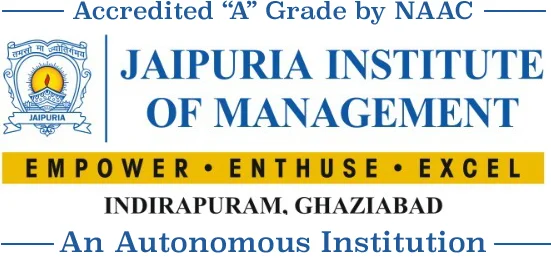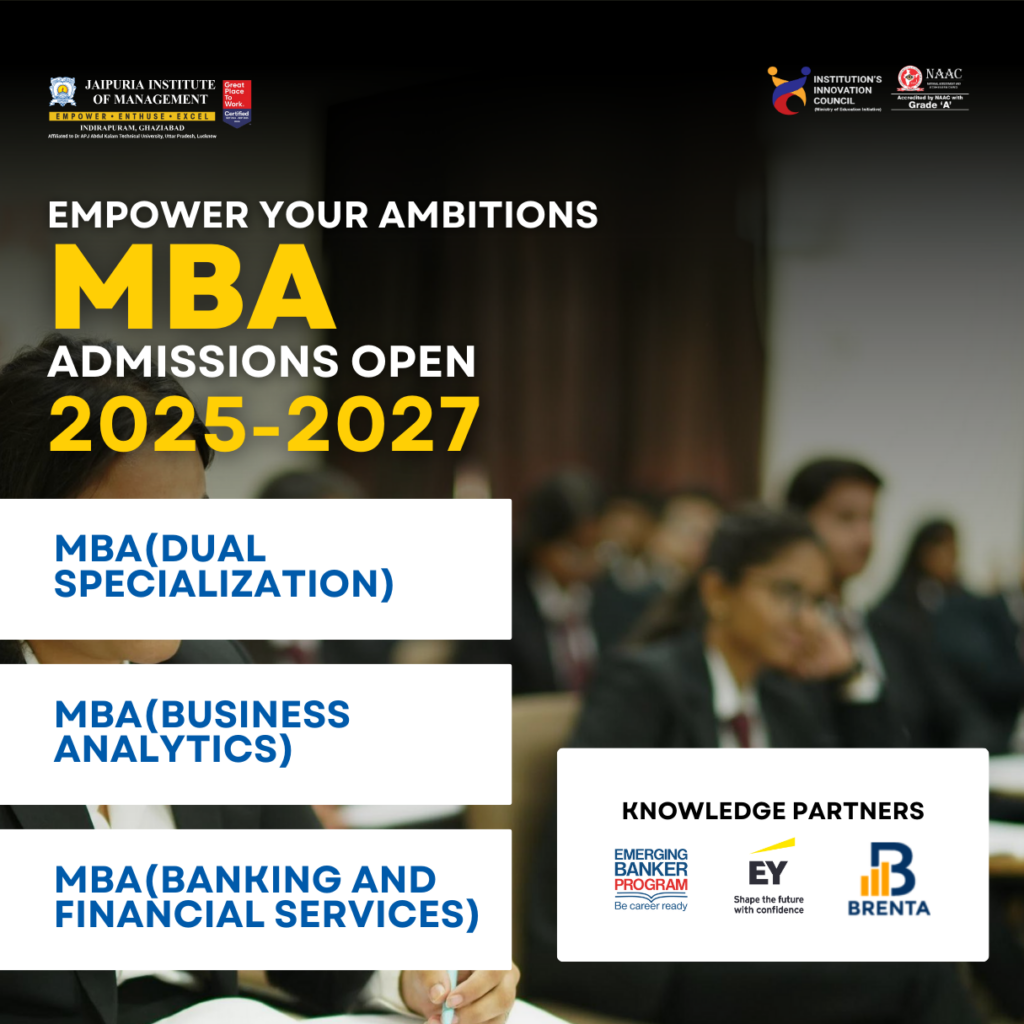We at Jaipuria Institute of Management Indirapuram Ghaziabad teach our MBA and MBA Business Analytics students through ‘contents beyond syllabus’ to enhance their employability skills. Here we are trying to discuss how the banking sector adopted different digital transformation initiatives to increase their performance and efficiency.
There are few factors responsible for the mechanization and digitization in the banking sector. These are standard cheque encoders, Magnetic Ink Character Recognition (MICR) code, use of standalone personal computers with their own Local Area Networks (LAN), Centralized Online Real-time Exchange (CORE) banking, Automated Teller Machines (ATMs), electronic fund transfers through Online banking and Telebanking. There are different modes of online fund transfers such as Real Time Gross Settlement (RTGS), Immediate Payment System (IMPS), National Electronic Fund Transfer (NEFT), and National Electronic Clearing Service (NECS). In recent years we noticed the growth in mobile banking services and other innovative services online. The role of digitization of banking commenced since the year 1980s and progressed a lot. Many banks have adopted Business Process Re-engineering (BPR) to design, prioritize, manage, control, and monitor their business processes, competitive performance standards and operational excellence. Along with BPR, banks computerized their labor-intensive back-office operations to reduce costs. Every bank is trying to provide convenience to their customers to gain the competitive advantage. Also implemented Core Banking Solutions (CBS) combining both front office and back office. This is a paradigm shift because of which customers can access their bank accounts from any branch located anywhere. Through CBS banks offered new opportunities for information management, better customer service and improved risk management.
The following are the major technological developments which brought about a digital transformation in banking system.
- People are now sending money to their friends, relatives and business partners with an app like ‘Venmo’. In 2018, Venmo’s volume increased to around 80%. Through ‘Venmo’ app consumers can transfer funds to any bank account immediately by paying a small transaction fee. Free transfer of funds might have taken one to three business days. Venmo also launched a debit card which informs to consumers of every transaction made, and separate all purchases category-wise through this debit card in their app.
- FinTech company like ‘Branch.co’ helps in determining the eligibility of a borrower to avail loan by assessing the borrower’s credit based on smartphone data. On the basis of the analysis of social media data, SMS information, and financial information, ‘MyBucks’ (another FinTech company) approves loans within 30 minutes by using their advanced financial technology. Because of the successful operations of these FinTech companies, few banks are now not needing/ recruiting the loan officers and hence, save on costs and can offer loans to the public by reducing the rate of interest. Another FinTech company like ‘Moven’ provides data to the consumers for their monthly spending by categories such as spending on groceries, vegetables, ordered foods, other shopping, etc. This will help the consumers to compare their spending between categories and take a decision on what items he/she will spend in future.
- There are also banking transactions through advancements in mobile technology. ‘Emma’, a personal finance management app, helps consumers to track their finances, find out wasteful subscriptions, make recommendations to help save money, view their weekly and monthly spending. ‘Chime’ (an American financial technology company which provides fee-free mobile banking services) offers a savings account, debit card and helps its users in providing information related to the transaction, transfer, and daily balance notifications.
- Robo-advisors brokerages (‘Betterment’, ‘SigFig’ and ‘Wealthfront’) are providing computer-generated financial advice in place of a human financial advisor. Robo-advisors are asking few quiz questions to users on their financial status and overall goals and then provides them directly with a suggested investment portfolio. There is no need of a middleman (a wealth manager). In the year 2017, Bank of America launched ‘Merrill Guided Investing’/ ‘Wells Fargo’s Intuitive Investor’ created by ‘SigFig’.
The trends in digital transformation of the banking system resulted in increase in customers to use most frequently credit/debit cards as well as electronic wallets, use of more and more chatbots in their customer care operations, use of digital process in banking transaction by visiting bank premises, increase in banking transaction through mobile phones due to cheap availability of internet, try to provide all kinds of services over the internet and ensure paperless transactions.

DR. SADANANDA PRUSTY
DEAN (ACADEMICS)
Jaipuria Institute of Management




